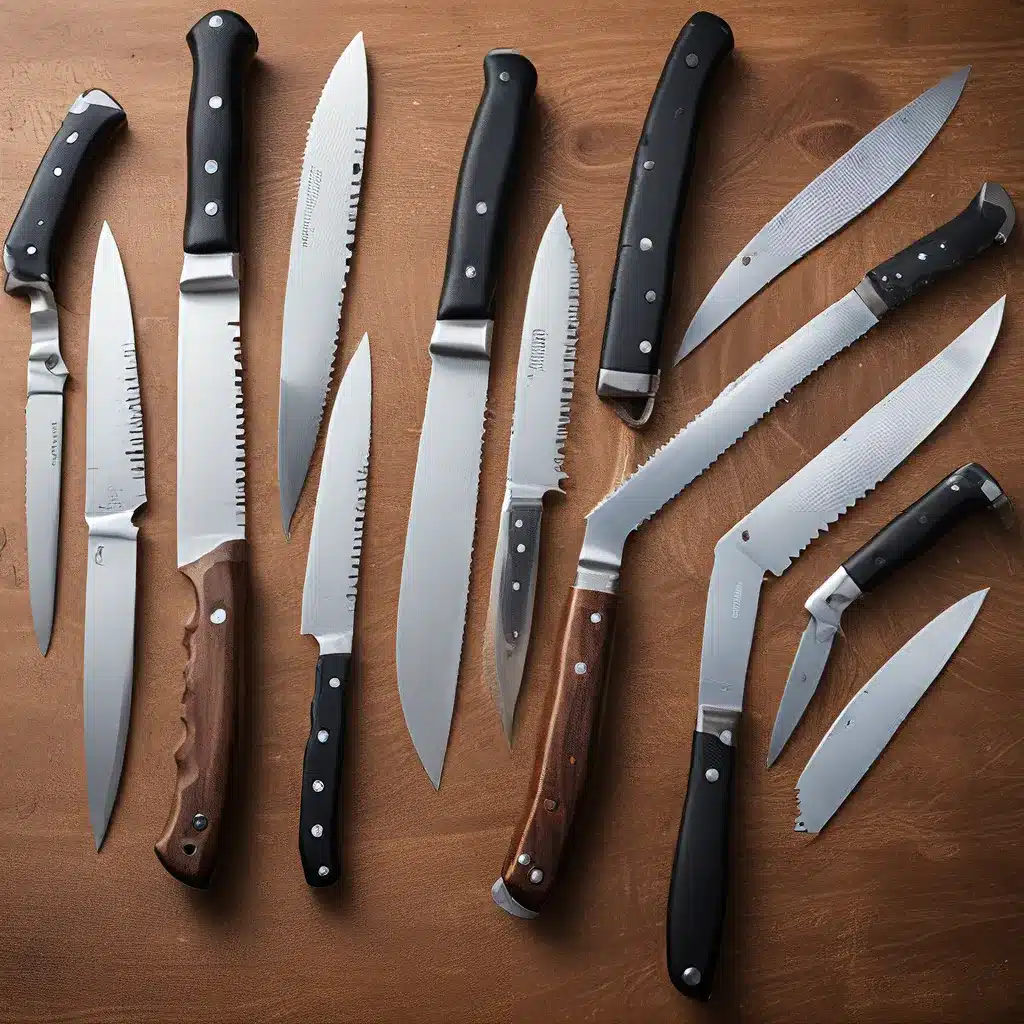
As an HR professional navigating the ever-changing landscape of workplace policies, I’ve come to realize that one of the trickiest areas to manage is the use of knives. Whether it’s the maintenance team using utility knives, the kitchen staff wielding chef’s knives, or the manufacturing crew handling specialized cutting tools, the presence of blades in the workplace can be a minefield of compliance concerns.
Let me share my experience in tackling this challenge head-on. When I first started in this role, I’ll admit I was a bit overwhelmed by the sheer number of regulations and guidelines surrounding the use of knives. It seemed like every week, there was a new OSHA update or a state-level law that we had to incorporate into our policies. But with some diligent research and a healthy dose of trial and error, I’ve managed to navigate these waters and keep our organization in good standing.
One of the key things I’ve learned is that proactive training and education are crucial. Employees need to understand not only the proper handling and use of their knives, but also the broader implications of workplace safety and regulatory compliance. We’ve implemented comprehensive training programs that cover everything from the anatomy of a blade to the symptoms and prevention of heat-related illnesses – because as it turns out, those two topics are more closely linked than you might think.
Speaking of heat, the recent focus on OSHA’s heat stress standards has added another layer of complexity to the knife-wielding equation. As global temperatures continue to rise, employers are under increasing pressure to protect their workers from the dangers of heat exposure. And when you factor in the physical demands of using sharp tools in a hot environment, the risk of accidents and injuries skyrockets.
That’s why we’ve made it a priority to not only educate our employees on heat stress recognition and mitigation, but also to ensure our knife-related policies and procedures are aligned with these evolving regulations. It’s a delicate balance, but one that’s essential for maintaining a safe and compliant workplace.
Of course, training and policy updates are only half the battle. The other critical component is providing the right equipment and tools. We’ve invested in high-quality, ergonomically-designed knives that minimize strain and fatigue, and we’ve worked closely with our suppliers to stay ahead of any material or design changes that could impact compliance.
But it’s not just about the knives themselves – it’s also about creating a culture of safety and accountability. We’ve implemented systems for regularly inspecting and maintaining our cutting tools, and we’ve empowered our employees to take an active role in identifying and addressing any potential hazards. It’s a collaborative effort, and one that’s paid off in the form of a significant reduction in knife-related incidents and injuries.
Now, I know what you’re thinking – with all of these moving parts, how on earth do you keep up? It’s a valid question, and one that I grapple with on a daily basis. But the way I see it, the alternative – letting our knife policies and procedures fall by the wayside – is simply not an option. The potential consequences, both in terms of worker safety and legal liability, are just too high.
So, we’ve had to get creative. We’ve leveraged technology to streamline our training and tracking processes, and we’ve fostered open communication with regulatory bodies and industry peers to stay on top of the latest developments. It’s a constant learning and adaptation process, but one that’s essential for maintaining a competitive edge in today’s rapidly evolving business landscape.
At the end of the day, I know that managing knives in the workplace is never going to be a walk in the park. There will always be new challenges and curveballs to navigate. But with a proactive, multi-pronged approach and a genuine commitment to safety, I’m confident that we can not only stay compliant, but actually create a workplace environment that empowers our employees and protects our bottom line.
After all, a sharp knife may be a dangerous tool, but it’s also a powerful one – and when wielded with skill and care, it can be a true asset to any organization. It’s up to us, as leaders and stewards of workplace safety, to ensure that our teams have the knowledge, the resources, and the support they need to use those tools effectively and responsibly.
So, if you’re facing similar knife-related challenges in your own workplace, take heart. You’re not alone, and there are strategies and solutions out there that can help you navigate this tricky terrain. Just remember to stay vigilant, stay flexible, and stay committed to the safety and well-being of your most valuable asset – your people.


